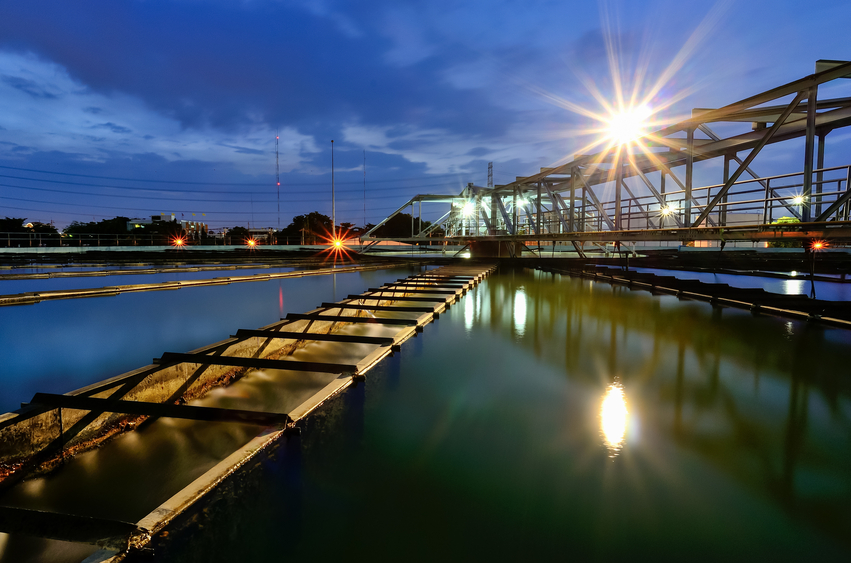Wyoming Wastewater 30 PDH Discount Package 2
Courses in this Package
Wastewater Treatment Processes and Systems (C07-002)
Wastewater Treatment System Selection (C02-009)
Management of Onsite and Clustered Wastewater Treatment Systems (C07-013)
Package Plants for Wastewater Treatment (C01-008)
Membrane Bioreactors (MBR) for Water Reclamation (C07-003)
Earthquake Resilience Guide for Water and Wastewater Utilities (C02-076)
Using Combined Heat and Power at Wastewater Treatment Facilities (R04-007)

This online engineering PDH course provides information on individual onsite/decentralized treatment technologies or unit processes. Information on typical application, design, construction, operation, maintenance, cost, and pollutant removal effectiveness is provided for most classes of treatment units and their related processes. This information is intended to be used in the preliminary selection of a system of treatment unit processes that can be assembled to achieve predetermined pollutant discharge concentrations or other specific performance requirements.
This 7 PDH online course is applicable to civil, and environmental engineers, as well as design and construction personnel involved with the planning, selection and design of subsurface wastewater infiltration systems.
This PE continuing education course is intended to provide you with the following specific knowledge and skills:
- Understanding of conventional system types and treatment options
- Knowledge of the subsurface wastewater infiltration system
- Establishing design considerations
- Evaluating construction management and contingency options
- Understanding the design, construction and functionality of septic tanks
- Understanding the design, construction and functionality of sand/media filters
- Understanding the design, construction and functionality of aerobic treatment units
In this professional engineering CEU course, you need to review Chapter 4 of the USEPA Onsite Wastewater Treatment Systems Manual, EPA/625/R-00/008, "Treatment Processes and Systems".
Upon successful completion of the quiz, print your Certificate of Completion instantly. (Note: if you are paying by check or money order, you will be able to print it after we receive your payment.) For your convenience, we will also email it to you. Please note that you can log in to your account at any time to access and print your Certificate of Completion.

This online engineering PDH course provides guidance on the selection process of the subsurface wastewater infiltration system. It describes various steps involved in the selection process including understanding of the prevailing design conditions, matching these conditions to system performance, establishing design boundaries and boundary loadings, evaluating the receiving environment and mapping out the site.
Selecting the appropriate system type, size, and location at the site depends on the wastewater flow and composition information, site- and landscape-level assessments, performance requirements, and the array of available technology options. Key to selecting, sizing, and siting the system are identifying the desired level of performance and ensuring that the effluent quality at the performance boundaries meets the expected performance requirements.
This 2 PDH online course is applicable to civil, and environmental engineers, as well as design and construction personnel involved with the planning, selection and design of subsurface wastewater infiltration systems.
This PE continuing education course is intended to provide you with the following specific knowledge and skills:
- Evaluating design conditions and selecting the appropriate system
- Matching design conditions to system performance
- Establishing design boundaries and boundary loadings
- Evaluating the receiving environment
- Mapping the site
- Developing the initial system design
- Rehabilitating and upgrading existing systems
In this professional engineering CEU course, you need to review Chapter 5 of the USEPA Onsite Wastewater Treatment Systems Manual, EPA/625/R-00/008, "Treatment System Selection".
Upon successful completion of the quiz, print your Certificate of Completion instantly. (Note: if you are paying by check or money order, you will be able to print it after we receive your payment.) For your convenience, we will also email it to you. Please note that you can log in to your account at any time to access and print your Certificate of Completion.

This online engineering PDH course provides an overview of key considerations for developing or enhancing management programs for decentralized wastewater treatment systems.
One in every four households in the United States relies on an individual onsite or small cluster system to treat wastewater. In far too many cases, these systems are installed and largely forgotten – until problems arise. On the other hand, EPA concluded in its 1997 Report to Congress that “adequately managed decentralized wastewater systems are a cost-effective and long-term option for meeting public health and water quality goals, particularly in less densely populated areas.”
The key to achieving effective performance of decentralized sewage treatment systems from the simplest “box and rocks” septic tank and drainfield system to the most complex treatment and dispersal units; is an effective management strategy. This strategy must consider several critical elements such as planning, site conditions, risk factors, system design, and operation and maintenance, all of which comprise a management program.
This 7 PDH online course is applicable to civil, environmental and chemical engineers, sanitarians, and others seeking an understanding of Management of Onsite and Clustered Wastewater Treatment Systems.
This PE continuing education course is intended to provide you with the following specific knowledge and skills:
- Introduction to the management of onsite and clustered wastewater treatment systems
- Relevant of the management guidelines to other water programs
- Description of management models
- How to apply the management models
Upon successful completion of the quiz, print your Certificate of Completion instantly. (Note: if you are paying by check or money order, you will be able to print it after we receive your payment.) For your convenience, we will also email it to you. Please note that you can log in to your account at any time to access and print your Certificate of Completion.

This online engineering PDH course provides information about three types of package plants: extended aeration, sequencing batch reactor and oxidation ditch systems. It discusses the general configuration, typical applications, advantages and disadvantages, typical performance, and cost for each.
Package plants are pre-manufactured wastewater treatment facilities typically used to treat flows between 0.01 and 0.25 MGD.
This 1 PDH online course is intended for civil, municipal, and environmental engineers, as well as anyone interested in or involved with wastewater treatment.
This PE continuing education course is intended to provide you with the following specific knowledge and skills:
- General configuration of extended aeration, sequencing batch reactor, and oxidation ditch package plants
- Typical applications for extended aeration, sequencing batch reactor, and oxidation ditch package plants
- Advantages and disadvantages of extended aeration, sequencing batch reactor, and oxidation ditch package plants
- Design criteria for extended aeration, sequencing batch reactor, and oxidation ditch package plants
- Typical performance and costs of extended aeration, sequencing batch reactor, and oxidation ditch package plants
In this professional engineering CEU course, you need to review the U.S. EPA Wastewater Technology Fact Sheet, Package Plants (EPA 832-F-00-016).
Upon successful completion of the quiz, print your Certificate of Completion instantly. (Note: if you are paying by check or money order, you will be able to print it after we receive your payment.) For your convenience, we will also email it to you. Please note that you can log in to your account at any time to access and print your Certificate of Completion.

This online engineering PDH study provides the student with information on MBR design and operation and information about four leading MBR equipment manufacturers.
The use of membrane bioreactor (MBR) technology, which combines conventional activated sludge treatment with low pressure membrane filtration, has been proven to be a feasible and efficient method of producing reclaimed water. The membrane component of the MBR process eliminates the need for a clarifier and is performed using low-pressure membranes such as microfiltration (MF) or ultrafiltration (UF). MBR technology offers several advantages to conventional wastewater treatment including reduced footprint, consistent and superior effluent water quality and ease of operation.
A pilot study was conducted by the US Bureau of Reclamation to evaluate the MBR technology for its potential application to water reclamation. The main purpose of the study was to evaluate several leading manufacturers in an effort to encourage competition within the MBR industry. In addition, the study focused on optimizing MBR operation for water reclamation. The study included a parallel comparison of four leading MBR suppliers.
This 7 PDH online course is intended for engineers, state regulators, and water treatment professional. It provides information on MBR design, operation, and costs. It will also assist those professionals that work in the area of upgrading and expansions of existing water and wastewater facilities or the design of new facilities. The course is suitable for a student with basic water treatment knowledge or for an advanced student that needs to brush up on water treatment basics.
This PE continuing education course is intended to provide you with the following specific knowledge and skills:
- General requirements of the USEPA Clean Water Act
- MBR performance evaluations
- Knowledge of MBR technology and equipment
- Wastewater treatment and MBR design criteria
- O&M requirements and costs of MBR systems
- Support information for determining MBR applications
In this professional engineering CEU course you will need to review the Department of Interior, "Optimization of Various MBR Systems for Water Reclamation, Phase III, Final Technical Report", as well as "Appendix A" to this report.
Once you complete your course review, you need to take a multiple-choice quiz consisting of thirty five (35) questions to earn 7 PDH credits. Twenty five (25) of the thirty five (35) questions will be based on the main DOI document. The final ten (10) questions will be based on Appendix A involving economics and visual identification of the different membrane units.
Upon successful completion of the quiz, print your Certificate of Completion instantly. (Note: if you are paying by check or money order, you will be able to print it after we receive your payment.) For your convenience, we will also email it to you. Please note that you can log in to your account at any time to access and print your Certificate of Completion.

This online engineering PDH course describes how water and wastewater utilities can be more resilient to earthquakes. It provides the best practices from utilities that have used mitigation measures to address the earthquake threat.
An earthquake is a sudden and violent shaking of the ground caused by movement within the earth’s crust or by volcanic activity. The water sector is particularly vulnerable to earthquake damage and service disruptions. By understanding the threat of earthquakes and the potential impacts to both the water infrastructure and the community, water utility owners and operators can make more informed decisions on earthquake mitigation options.
This 2 PDH online course is applicable to environmental, civil, and structural engineers as well as others interested in learning more about how wastewater utilities can be more resilient to earthquakes.
This PE continuing education course is intended to provide you with the following specific knowledge and skills:
- Understanding the earthquake threat
- Knowing how to Identify vulnerable assets and determine consequences
- Learning how to pursue mitigation and funding options
- Familiarizing with the available tools to assess specific structures
- Familiarizing with the standards and resources for earthquake resilience
In this professional engineering CEU course, you need to review the document “Earthquake Resilience Guide for Water and Wastewater Utilities” which is based on the U.S. EPA publication number EPA-810-B-18-001 dated March 2018.
Upon successful completion of the quiz, print your Certificate of Completion instantly. (Note: if you are paying by check or money order, you will be able to print it after we receive your payment.) For your convenience, we will also email it to you. Please note that you can log in to your account at any time to access and print your Certificate of Completion.

This online engineering PDH course describes the technical and economic potential for introducing combined heat and power (CHP) systems to wastewater treatment facilities (WWTFs), especially smaller WWTFs with influent flow rates of 1 to 5 MGD. The course also presents operational observations obtained through interviews with WWTF operators who have employed CHP.
Some of the key findings given in the course are that 1) CHP is a reliable, cost-effective option for WWTFs that have, or are planning to install, anaerobic digesters; 2) while many WWTFs have implemented CHP, the potential still exists to use more CHP, based on technical and economic benefits; 3) on a national scale, the technical potential for additional CHP at WWTFs is over 400 MW of biogas-based electricity generating capacity and approximately 38,000 MMBtu/day of thermal energy; and 4) translating CHP potential into actual successes requires an understanding of operational realities.
This 4 PDH online course is intended for engineers working as CHP project developers, WWTF operators and state and local government policy makers.
This PE continuing education course is intended to provide you with the following specific knowledge and skills:
- Overview of CHP and its benefits at WWTFs
- Market for WWTFs with CHP
- Technical potential for CHP at WWTFs
- Economic potential for CHP at WWTFs
- First-hand observations gathered through interviews of WWTF operators regarding the benefits and challenges of CHP
In this professional engineering CEU course, you need to review the course document titled, “Using Combined Heat and Power at Wastewater Treatment Facilities” which is based on the U.S. Environmental Protection Agency document, “Opportunities for Combined Heat & Power at Wastewater Treatment Plants: Market Analysis and Lessons from the Field,” produced by the Environmental Protection Agency Combined Heat and Power Partnership, October, 2011.
Once you complete your course review, you need to take a multiple-choice quiz consisting of twenty five (25) questions to earn 5 PDH credits. The quiz will be based on this EPA publication.
Upon successful completion of the quiz, print your Certificate of Completion instantly. (Note: if you are paying by check or money order, you will be able to print it after we receive your payment.) For your convenience, we will also email it to you. Please note that you can log in to your account at any time to access and print your Certificate of Completion.